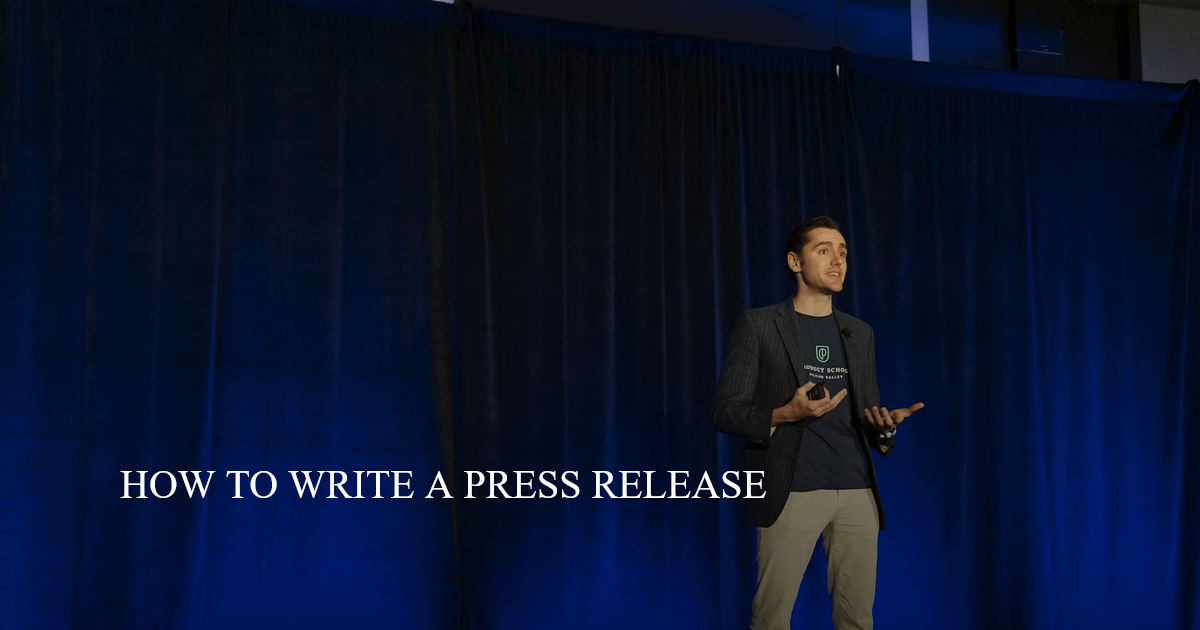Summary. To run an effective meeting, you need to determine your objectives, create an agenda, invite the appropriate people, prepare logistics, be punctual, involve your members, summarize key points, and conclude with action items.
It is a business cliche to hate meetings. Employers and employees alike find them to usually be a waste of their time. This is because these meetings are poorly implemented.
It does not have to be like this. Meetings are vital to an organisation’s success when they bring people together and maximize everyone’s skills to solve problems. However, for meetings to be effective, they need to be given serious attention in preparation and execution.
Key Takeaways
-
Effective meetings require an agenda that is prioritized on realistic goals.
-
Engaging members is crucial to running an effective meeting.
-
Don’t let meetings run longer than they have to.
-
The facilitator is crucial to conducting a meeting to a successful conclusion.
What Is An Effective Meeting?
An effective meeting is one that:
-
Provides a clear purpose
-
Is engaging
-
Solidifies or creates ideas
-
Is acted upon with positive results
Without these characteristics, meetings can result in a waste of time and money. What’s more, a poorly run meeting can cause greater confusion and dissatisfaction among employees.
How to Run an Effective Meeting
To run an effective meeting, you need to make sure you:
-
Determine purpose and goals. Before you begin your meeting, you need to know what you want to accomplish. Consider if anything can simply be written in an email or communicated in some other form. Your meeting should revolve around the fact that you need people there.
-
Create a meeting agenda. This is key. A meeting agenda will guide the meeting along. By writing out a meeting agenda, you can help clarify goals and determine a structure. Your agenda should prioritize items to discuss based on the purpose of the meeting. Consider providing a copy of the agenda to members ahead of the meeting. This way, they will know what to expect and prepare accordingly.
-
Invite the right people. Everyone invited to the meeting should have some level of involvement or purpose. When you bring too many unnecessary people to meetings, you risk having an unengaged and possibly distracted audience.
-
Prepare logistics. Meetings that get derailed by avoidable issues will frustrate its members. Stay on top of this by planning ahead everything you and your members will need. You may want to:
-
Test equipment ahead of time, such as projectors or video chat software and hardware.
-
Make sure your physical or digital meeting space is available.
-
Consider seating arrangements.
-
Arrive early to set up.
-
-
Start and end on time. Meetings that do not stick to their schedules can frustrate employees who have other things they need to do. Additionally, when a meeting doesn’t start on time, you have already set the stage for a disengaged audience.
-
Keep members engaged and involved. Speaking of engagement, you want to involve your members in the meeting. This means that every action item should not go on for too long without requiring the attention of the meeting members. This is why the purpose and agenda of the meeting are so important. They will provide structure and relevancy.
-
Close with summary and action items. Give yourself time in the end to sum up what was discussed. This helps people retain the information and provides a moment to confirm or clarify what was discussed. Finally, the meeting should end with some action item tied to its purpose.
9 Tips for Successful Meetings
To run a successful meeting, consider the following tips:
-
Choose an appropriate length. Some meetings, such as weekly team meetings, can be short, while others, such as strategic brainstorming sessions, need more time. Know the purpose and type of meeting you want to have and schedule your time accordingly.
-
Choose the right time of the week and day. When you schedule a meeting, make sure it has a big impact. A late Monday morning can be good for recapping last week and planning ahead.
A Wednesday afternoon could be better for tackling new issues that have arisen. It all depends on your situation. If you are having remote meetings, you also need to consider a convenient time for people from different time zones.
-
Establish guidelines and rules. If you set expectations, you have a better chance of keeping people on track. Otherwise, with a lack of rules and guidelines, your meeting will lose focus. A proactive approach also makes it easier to enforce rules, whereas if you don’t discuss them ahead of time, people can feel blindsided if they get reprimanded.
-
Be positive and appreciative of increasing engagement and productivity. The facilitator needs to make sure that everyone stays on track, but this doesn’t mean they need to be ruthless dictators.
Instead, they should help build an inclusive environment where people can feel comfortable speaking up or listening. Make sure everyone feels welcome and thank them for their contributions. Reframe any challenge or conflict as an opportunity for growth.
-
Use the 5-minute rule. The 5-minute rule states that no item on a meeting’s agenda should go on for five minutes without requiring action from the meeting members. Essentially this helps prevent either presentations or ongoing discussions from getting out of hand and losing the interest of others.
-
Break items up. Similarly, don’t let presentations, discussions, or other meeting items be too large or complicated in size. Even if the topic is complex, find ways to break it up to make it easier for others to understand and engage with.
-
Involve members. Another great way to keep people engaged is to make them become more involved with action items. Either plan for action items to directly involve participants, or else the facilitator should be responsible for getting additional thoughts and opinions from members.
-
Periodically evaluate the effectiveness of meetings. It can be easy to get stuck in old habits that may have worked once but no longer serve the same purpose. Or, you may try a new meeting format, and after a while, you will want to know how others feel about it.
Regardless, it is a good business practice to get feedback about meetings and also see what results, if any, have been achieved through your meetings.
-
Use a meeting cost calculator. Meetings take up time, money, and other resources. Make sure your meeting is an investment that pays off by understanding your cost going into the meeting. There are several websites and applications that can help you determine whether or not a meeting is worth the cost.
The Importance of Having a Meeting Facilitator
You have probably experienced meetings that, although they had a good reason to be called, ended up feeling like a waste of time. Maybe the discussion turned into irrelevant conversations, or one person spoke so much that they prevented anyone else from contributing. You feel like the meeting did not accomplish its aims. This is why you need a good facilitator in charge.
Any effective meeting requires an effective facilitator because if they do their job right, they will:
-
Keep people focused on the meeting’s purpose. It is very easy to get distracted during conversations in a meeting, even if it’s unintentional. Whenever this happens, it is the responsibility of the facilitator to guide all discussions back to the topic at hand.
-
Manage personalities. Sometimes a meeting will have an audience with very different professional or personal philosophies. This can create tension and conflict, so the facilitator has to act as the diplomat who smoothes over any differences. One way to do this is to remind everyone of the shared goals they all must work towards.
-
Allow people to speak. You may have been in meetings where one or two people seem to dominate the discussion. Others may not speak up because they are shy or disengaged. The facilitator has to keep everyone involved by offering or suggesting the opportunity for new voices to be heard.
Note that the facilitator has to be mindful that they themself do not speak over and ignore others in the meeting.
-
Summarize discussions. It is very helpful to summarize what has been discussed at certain points in the meeting. This is because it offers the opportunity to clarify miscommunication, as well as reaffirm key points that people need to remember.
The facilitator should choose the appropriate times to summarize the discussion, such as at the start of the meeting, between changes in topics, before breaks, and at the end of the meeting.
-
Maintains a positive outlook and growth mindset. The facilitator helps keep everyone focused on progress with a positive approach to problems. People will be more engaged when they can see challenges as opportunities and feel confident in their capacity to change.
Clearly, a facilitator is neither a dictator nor a ceremonial role. For a meeting to accomplish its goals, the facilitator has to act as the conductor who guides everyone else along to a productive end result.
The Benefits of an Effective Meeting
Meetings are not useless if they provide legitimate contributions to the success of a company and its employees.
When organized and executed correctly, a business meeting will:
-
Solve problems. A meeting brings people together to maximize their critical thinking through brainstorming, discussion, and evaluation.
-
Clarify goals and identity. A meeting is an opportunity to make sure everyone is on the same page. This is a proactive approach that can help avoid disastrous miscommunication in the future.
-
Review current complex projects. When a team works on a project together, they need the occasional review to address any concerns or update others on their progress.
-
Increase teamwork. An effective meeting builds solidarity among a team of employees because they are asked to work together to achieve mutual success.
-
Inspire creativity. A meeting that encourages ideas and promotes a safe environment to brainstorm gives its members the opportunity to provide multiple perspectives that can be used to find new solutions.
-
Engage employees. A properly run meeting makes sure each member has a valid purpose and provides them with content that is relevant to their professional lives.
-
Increase productivity. Effective meetings keep everyone on task, make sure everyone has the resources they need, builds up a team, evaluate progress, and ensure that every member understands their role. All of this combined leads to a more productive workforce.
Meetings don’t have to be a waste of time, money, and other resources. They can be investments in the future growth and success of your company. It only takes a concerted effort to ensure they are implemented correctly.
Common Meeting Mistakes
A meeting becomes a problem when it is not constructive or relevant to the needs of a business and its employees. This occurs for a variety of reasons, including:
-
Lack of focus or purpose. Meetings without a clear reason waste the time of its members, who could be working on things that actually do have a purpose in their professional lives.
-
No agenda or rules. Without any sort of structure and way to maintain it, meetings can devolve into meandering conversations or become focused on unproductive items.
-
People speak for too long. Unless the topic is extremely engaging to all members, when one person speaks for too long, they inevitably lose the attention of others.
-
Bad timing. The time of day and week makes all the difference. Meetings that are inconvenient for its members already make it challenging to be effective. Imagine if you called a Friday afternoon meeting. How many people’s minds will already be on the weekend?
-
Irrelevant topics. Meetings that are bogged down with information that has nothing to do with the current goals of its members only serve to decrease engagement.
-
Unnecessary audience. People at the meeting should find the meeting helpful. If some of its members have nothing useful to learn or contribute, they will likely disengage and may even distract other members.
Types of Meetings
When you want to run an effective meeting, it is important to know the type of meeting you want to organize. This will help you structure the meeting appropriately to maximize its effectiveness.
Meetings can be broken down into two general categories:
-
Routine meetings. These are meetings that are scheduled consistently and frequently. Routine meetings tend to be short, anywhere from 15 minutes to one hour. They are usually used to review and evaluate whatever topic is at hand. Examples of routine meetings include:
-
Regular team meeting
-
Project evaluation meeting
-
-
Strategic meetings. Strategic meetings are one-off meetings that get people together to plan for some project or event. They can be longer than routine meetings and may even exist over the course of several days. Examples of strategic meetings include:
-
Decision-making meeting
-
Brainstorming meeting
-
Task-force meeting
-
Effective Meetings FAQ
-
What are the five key elements of effective meetings?
The five key elements of an effective meeting are:
-
A clear objective and agenda
-
A relevant audience
-
An established facilitator
-
Rules, policies, and procedures
-
Action items and summaries
These elements work in tandem to sync up the members of the meeting so that their combined presence results in some sort of relevant progress.
-
-
What are the P’s of effective meetings?
The P’s of an effective meeting are:
-
Purpose. The meeting has a reason for its existence that is relevant to the professional goals of the organization and its members.
-
Planning. The meeting has been organized and structured.
-
People. The meeting has to understand that its members are people who need to be engaged and participate.
-
Process. The meeting is a process that brings some sort of growth to its objectives.
-
-
What are five meeting structures?
Five meeting structures include:
-
Planning meetings.
-
Brainstorming meetings.
-
Evaluation meetings.
-
Recap meetings.
-
Problem-solving meetings.
The type of meeting influences how it will be organized. To make sure your meetings are effective, you want to apply the right elements to the appropriate topic.
-
-
What is the 40 20 40 rule meeting?
The 40-20-40 rule of meetings break down the amount of time and energy that goes into planning and execution. 40% of attention should be applied to organizing the meeting. 20% of attention should go to the meeting itself. 40% of the energy should go towards the meeting’s action items.
-
What are the three characteristics of a meeting?
The three characteristics of a meeting are:
-
Time. This is when the meeting will occur.
-
Space. This is where the meeting will take place.
-
People. This is who will be involved in the meeting.
These are the objective facts about the meeting that provide important dimensions to the process.
-
References
-
NOAA – Introduction to Planning and Facilitating Effective Meetings
-
Department of Homeland Security – Holding Effective Meetings Guide
- Management
- Guide to Customer Retention
- Management Abbreviations
- Innovation in the Workplace
- Zappos Hiring Case Study
- Why a Clean Workspace Is Good for Business
- Tips for HR Magement Success
- How to Achieve Better Results With Your Team
- Working With a New Client
- What Is Market Mapping
- Managing Unprofessional Online Behavior
- Morale-Boosting Activities
- Understanding Your Team
- Signs of a Bad Hire
- How to Spot Leadership Potential
- Quality Management Implementation
- Goal Setting Tips for Business Owners
- How To Create An Effective HR Business Plan
- How To Avoid Nepotism
- Safeguarding Procedures For HR Managers
- How To Create A Productive Workplace
- The Power Of Strategic Partnerships
- Advice From Successful Business Leaders
- Why You Should Network
- How To Manage Up
- HR Titles
- Corporate Retreat Ideas
- What Is An Employee ID?
- What Is Employee Self-Service?
- The 4 Ps Of The Marketing Mix
- How To Be Flexible At Work
- What Is Greenwashing?
- What Does A Chamber Of Commerce Do For Businesses
- How To Write A Sales Introduction Email
- A Guide To The Critical Path Method
- What Is A Change Agent?
- How To Build Your Employer Brand
- How To Have Effective Meetings





